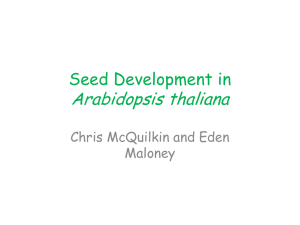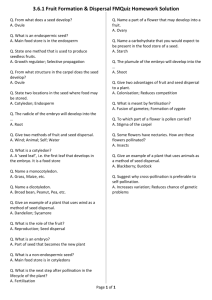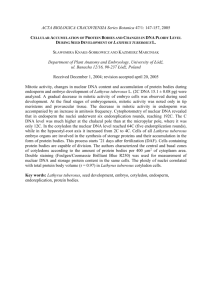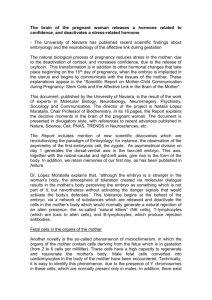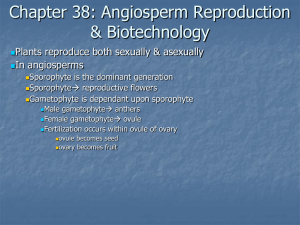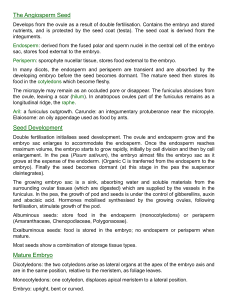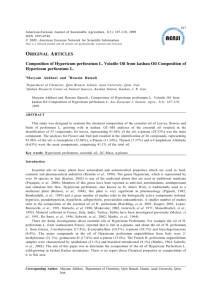Research Paper
advertisement
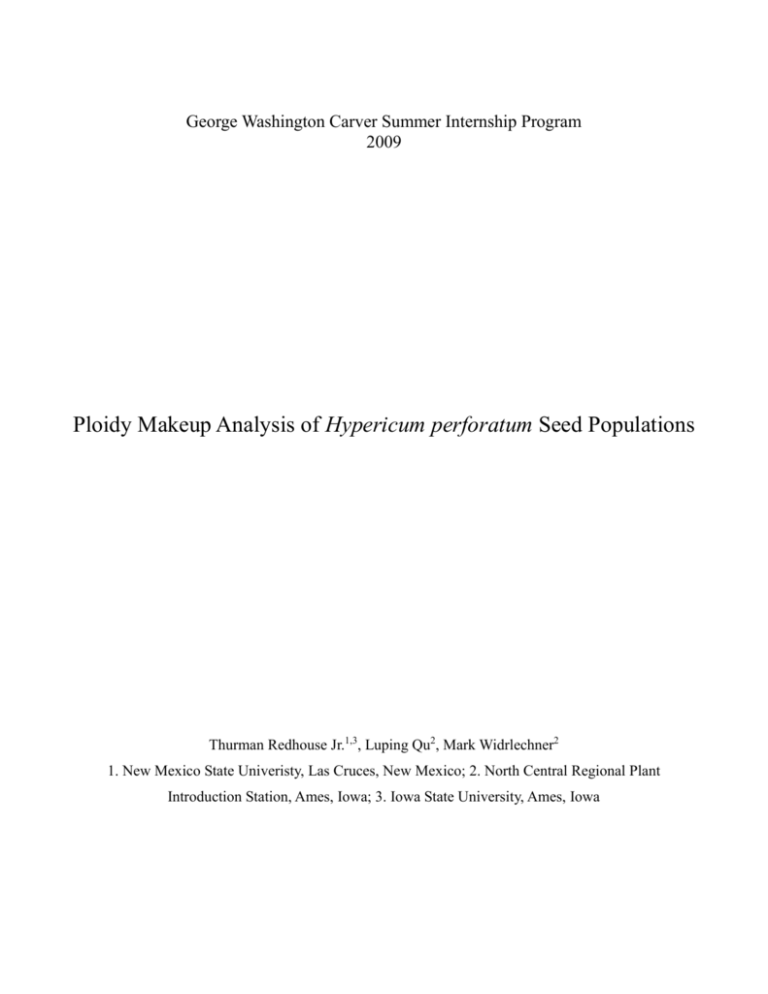
George Washington Carver Summer Internship Program 2009 Ploidy Makeup Analysis of Hypericum perforatum Seed Populations Thurman Redhouse Jr.1,3, Luping Qu2, Mark Widrlechner2 1. New Mexico State Univeristy, Las Cruces, New Mexico; 2. North Central Regional Plant Introduction Station, Ames, Iowa; 3. Iowa State University, Ames, Iowa Abstract Populations of Hypericum perforatum may include diploid, tetraploid, and hexaploid cytotypes. Tetraploid populations are by far the most common and likely the ancestral type and are capable of asexual reproduction by apomixes. A population with mixed ploidy types may affect detrimentally on seed regeneration and germplasm conservation. Analysis of the ploidy makeup is done through flow cytometry. The seeds of three H. perforatum accessions were obtained from the North Central Regional Plant Introduction Station (NCRPIS) in Ames, Iowa. Through the flow cytometry analysis of individual seed samples we will understand whether the accession contains different ploidy types and the percentage of each ploidy type in an accession. By comparing the ploidy levels of the endosperm tissue with that of the embryo tissue, we may also be able to determine which seeds were produced through normal sexual reproduction or asexual reproduction (apomixes). The results will be useful in management of H. perforatum germplasm. Introduction H. perforatum is referred to mostly as St. John's wort. It works as an anti-inflammatory, antiseptic, and antiviral. In Native American tribes such as the Cherokee, the Iroquois, and the Montagnais, they have used St. John’s wort for the treatments of fever, cough, nosebleed, snakebites and intestinal problems. Although research on medicinal plants focuses mainly on chemical properties of the plants, research on the genetics and germplasm are being done for future aid towards the success of the medicinal plants. Materials and Methods Seeds of 3 H. perforatum accessions (Ames 28292, Ames 27490, and Ames 325351) were obtained from the NCRPIS. Each individual seed was placed in a 5 mL tubes. An amount of 1 mL of nuclei stabilizing buffer was applied and the seed was broken down with a homogenizer, to an effort to release the nuclei within the seed. Again 1 mL was added and then filtered. After filtration the solution was then centrifuged for 6 minutes at a speed of 800 rpm. With the nuclei settled at the bottom of each tube, the supernatant were discarded. The nuclei were resuspended with 250 DAPI-staining buffer and analyzed by a flow cytometry for relative nuclei DNA content. Results and discussion a b c Figure 1. Typical flow cytometry histograms of single seed samples of Hypericum perforatum. a) diploid (2x = 16) embryo with tetraploid (4x = 32) endosperm, b) tetraploid embryo with decaploid (10x = 80) endosperm, and c) hexaploid (6x = 48) embryo with decaploid endosperm. All three cytotypes (diploid, tetraploid, and hexaploid) were detected in seeds from the accession Ames 27490 and only tetraploid and hexaploid seeds were found in Ames 325351 and Ames 28292. Figure 1 shows the typical flow cytometry histograms. These histograms can aid in determining the difference in embryo and endosperm tissue through the peak locations. Endosperm peaks are smaller than embryo peaks because embryo contains more tissue than endosperm in Hypericum. The seed sample shown in Figure 1 were produced either by apomixis (a and b) or by sexual reproduction (c). This is determined by comparing the DNA content of the embryo with that of the endosperm. A 2C peak and a 6C peak indicate that the embryo sac was reduced and the egg cell developed parthenogeneticaly while the center cell was fertilized by a reduced male gamete. A tetraploid seed from a tetraploid mother plant generates two signal peaks: a 4C peak and a 10C peak, which show that the embryo sac was unreduced and egg cell developed parthenogenetically while the center cell was fertilized by a reduced male gamete. A 6C peak and a 10C peak indicate that the embryo sac was unreduced and both the egg cell and the center cell were fertilized by reduced gametes. These results suggest that further investigation is needed to determine the impact of mixed cytotypes in a H. perforatum accession on its germplasm management Conclusion Hypericum perforatum accessions tested in this investigation contains mixed ploidy types. Flow cytometry is a very effective and less time consuming method for evaluation of ploidy types and can also be used in determining reproductive pathways in plants by analyzing seed samples.
